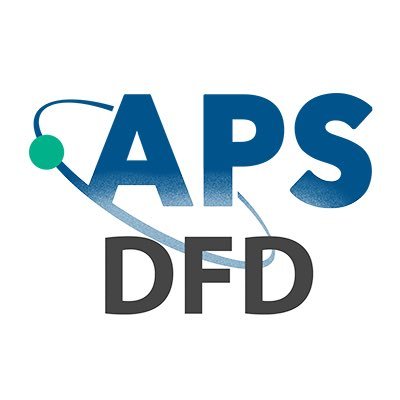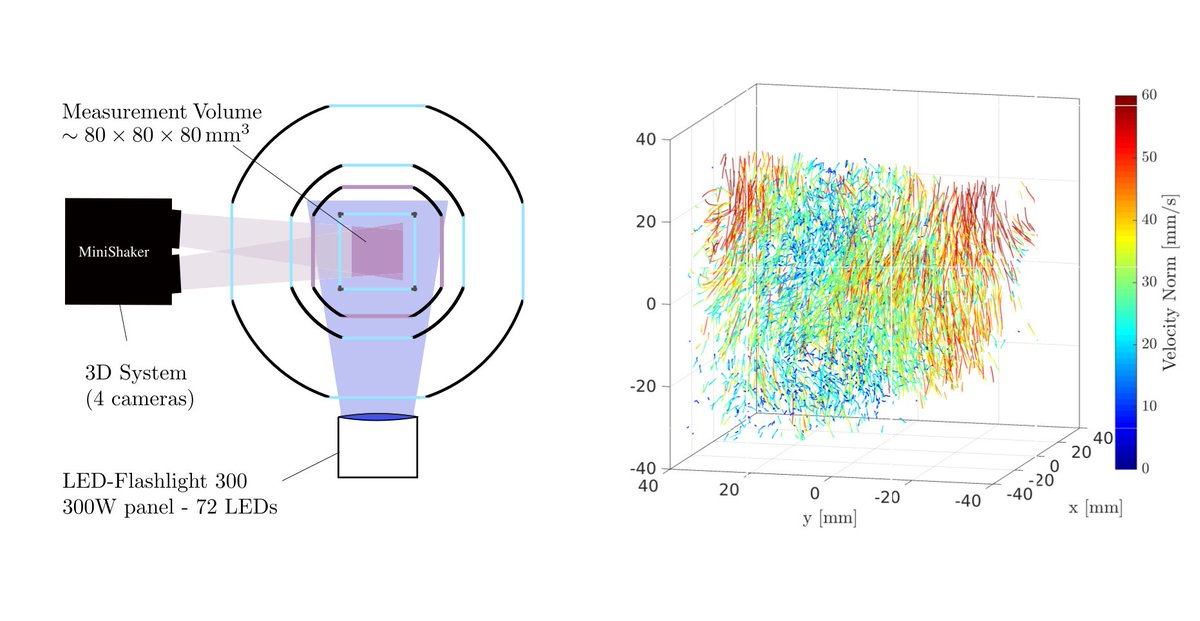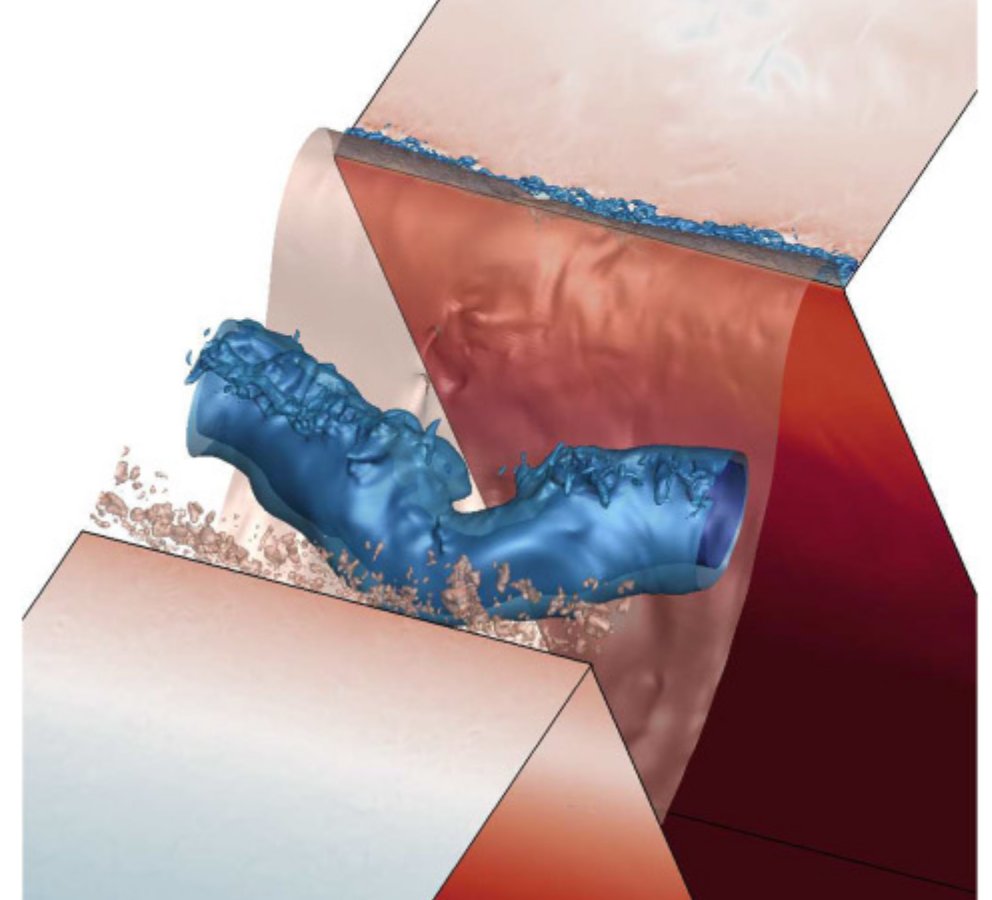
APS Division of Fluid Dynamics
@apsfluiddynamic
Followers
911
Following
569
Media
67
Statuses
483
In turbulent superfluid helium, quantum vortex lines form tangles with a characteristic mean intervortex spacing. Experiments show this spacing follows a Kolmogorov-like power law with Reynolds number, which can be explained by classical turbulence theory. https://t.co/TkEDPH5VQx
0
14
55
While traditional wave models often struggle to efficiently capture ocean waves nonlinearity, a new physics-informed neural network approach pushes this limit. From sparse data, it reconstructs and predicts phase-resolved, nonlinear, and dispersive waves. https://t.co/6etXwmbyzd
0
7
35
Review submission information on the GFM website for detailed instructions and work with your team to create your video or poster entry. The deadline to submit your entry to the GFM portal is Tuesday, September 16, at 5:00 p.m. ET. https://t.co/t8YaZzDDDW
0
0
1
🚨 Don’t miss the Gallery of Fluid Motion Submission Deadline - Sept. 16 at 5:00 pm ET! DFD Members are invited to share their remarkable works as videos and posters, highlighting the captivating science and breathtaking beauty of fluid motion!
1
3
8
To bloom, phytoplankton must cross stratified shear layers. Simulations show that different types of instability affect scalar fluxes and mixing, accelerating phytoplankton growth, especially when physical and biological timescales match. Read more at https://t.co/NvcbEBHZNL
2
28
92
Why do Lagrangian particles in turbulence separate faster backward in time than forward? In a new Letter, @ronshnapp shows this irreversibility is driven by how the particles' velocities align with the separation vector, rather than their speed. https://t.co/PA00hJFAS4
3
29
114
The excitation of multiple modes in the shape oscillations of an air bubble in water resulting from coalescence can be probed using magnetic levitation. While the bubble shape agrees with theory, multimode coupling greatly affects its frequency response. https://t.co/zifaCN0FAO
2
7
32
A splitter plate on the windward side of a cylinder can amplify, rather than suppress, rotational vibrations. Simulations by @ak_pandey94 & @R_Bhardwaj_IITB at low Reynolds numbers show regimes from vortex-driven large-amplitude oscillations to chaos. 🔗 https://t.co/YYQuj2NSr5
0
15
71
From microalgae to mouse embryos, cilia perform vital roles: swimming, feeding, pumping, and sensing. This invited article explores how cilia generate flow, highlighting their diverse functions and the valuable insights fluid dynamics can offer to biology. https://t.co/Ryb41uVSHJ
0
10
42
Temporal resolution of turbulent flow fields can be enhanced with a new model-based approach: projecting the Navier-Stokes equations onto a low-dimensional POD space and integrating them in time enables reconstruction of flow dynamics from sparse PIV data. https://t.co/qLBt8SwdB5
2
22
89
📢 PRFluids Editors' suggestion: When coughing or sneezing, mucus forms bag-like structures that break into droplets. Experiments and simulations show that viscoelasticity makes these bags larger and thinner, which reduces the droplet size upon rupture. https://t.co/a1e9ZQTTzM
0
8
24
🗓️ From the July issue (1) https://t.co/IjJhKCRf69 (2) https://t.co/KFjIWcszLJ (3) https://t.co/siN7dnW42h (4) https://t.co/lbq3wSXaPq These papers, along with all others published in Phys. Rev. Fluids last month, are available at https://t.co/MYxblma3Lz.
#fluiddynamics
0
9
30
📢 PRFluids Editors' Suggestion: To navigate upwind, boats zigzag to flip the sail into its mirror shape. Simulations use a membrane and a vortex-sheet model to study which parameters cause a successful flip 🔗 https://t.co/SYdeOPLcpD Synopsis in Physics: https://t.co/BGMwBEBrID
0
2
10
☁️ How does turbulent mixing affect cloud entrainment? Using the Lagrangian diffuselet model to study passive scalar mixing in a cloudy air filament, with and without phase change, shows good agreement with simulations in the early stages of the process. https://t.co/3SerenfB06
0
9
30
🚨 The PRFluids Journal Club returns on July 29th at 12:00 PM Eastern Time! This time, Valentin Dorel and colleagues will present their recent paper “Laboratory Modeling of Moist Convection Using a Reactive Fluid”, followed by a live Q&A. Register here:
📢 PRFluids Editors' suggestion: Convection driven by buoyancy released during moisture condensation is common in the atmosphere. Dorel et al. present a lab experiment replicating key features of moist convection and study the instabilities that develop 🔗 https://t.co/S4lcqWMMQI
0
2
17
This is a great opportunity to get to know - and be known by - the global Fluid Dynamics community! The selected officer(s) will take care of gathering content and posting regularly, and they will be supervised by the Media & Science Relations committee of the APS -DFD.
1
0
0
Seeking the next APS-DFD social media officer! 🎉 The American Physics Society (APS) Division of Fluid Dynamics (DFD) is currently looking for motivated junior APS-DFD members to become the next APS-DFD social media officer for a two-year term.
1
0
6
🗓️ From the June issue (1) https://t.co/eNkw93UQRl (2) https://t.co/XpO0yO0nhY (3) https://t.co/2eguYhNIWf (4) https://t.co/v80LntWHc4 Find these and all other papers published in Phys. Rev. Fluids over the past month at https://t.co/nLQJIQuj5Q
#fluiddynamics
0
6
23
📢 PRFluids Editors' suggestion: When a beet slice sits in its own juice, a clear fringe appears. Liu et al. trace it to a surface dimple caused by wetting-induced suction at the beet’s edge, set by the balance of surface tension, gravity and viscosity. 🔗 https://t.co/QI0gU6eOJ9
3
11
39

















